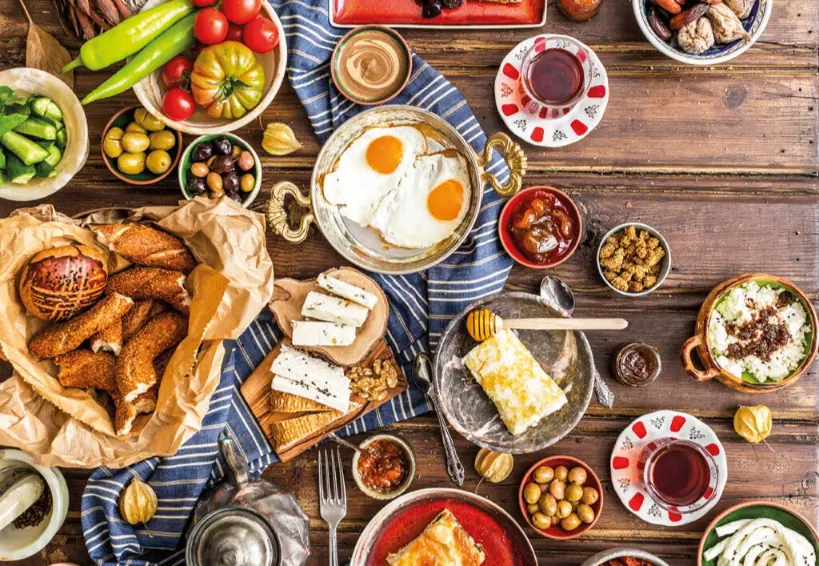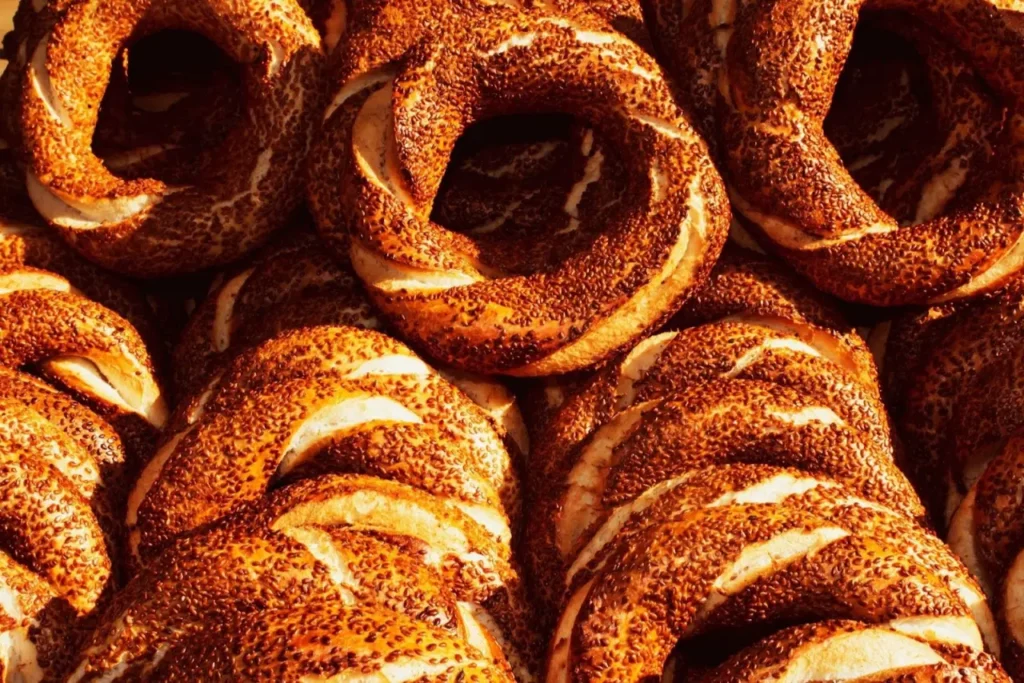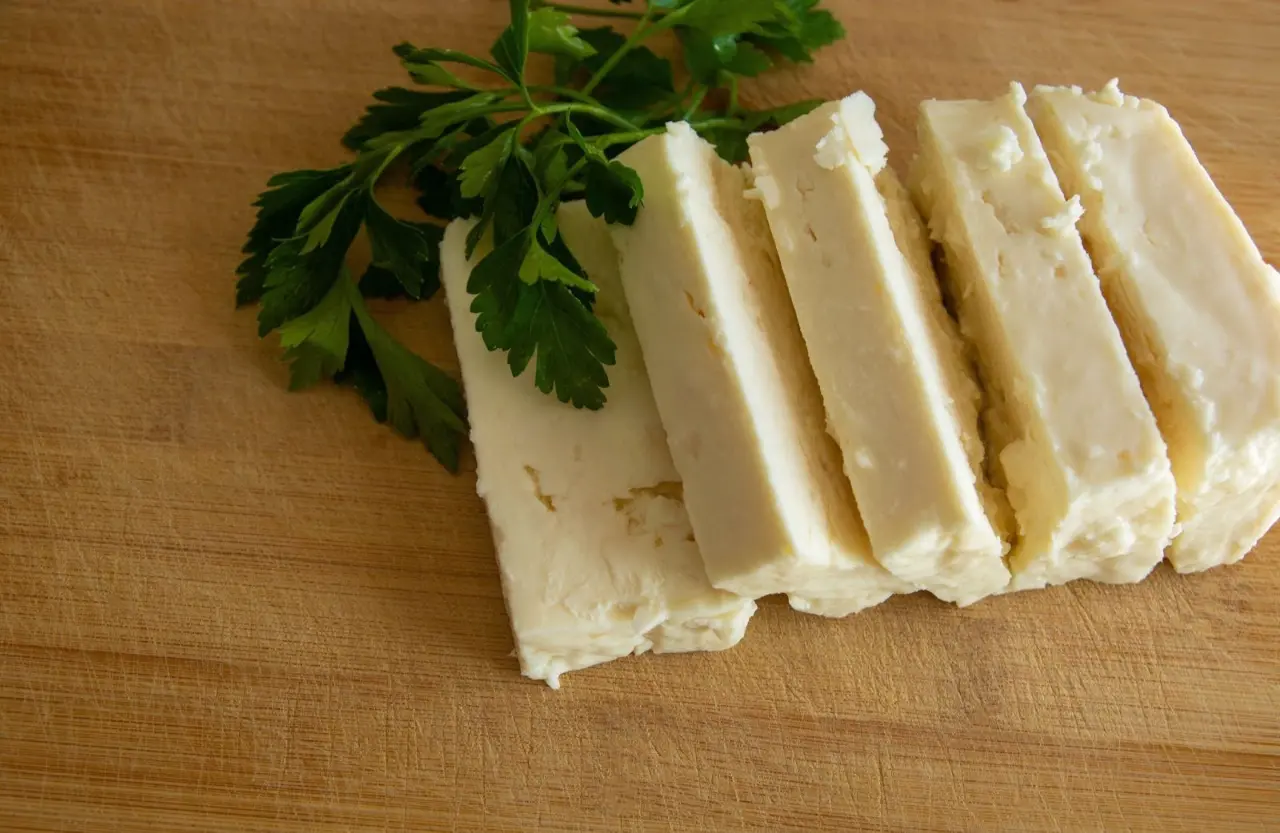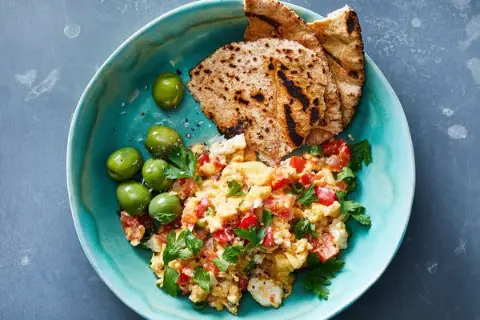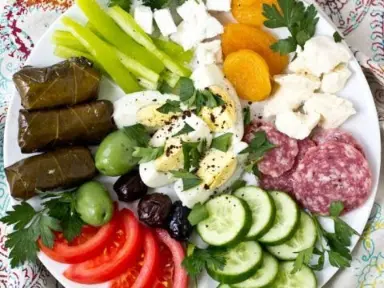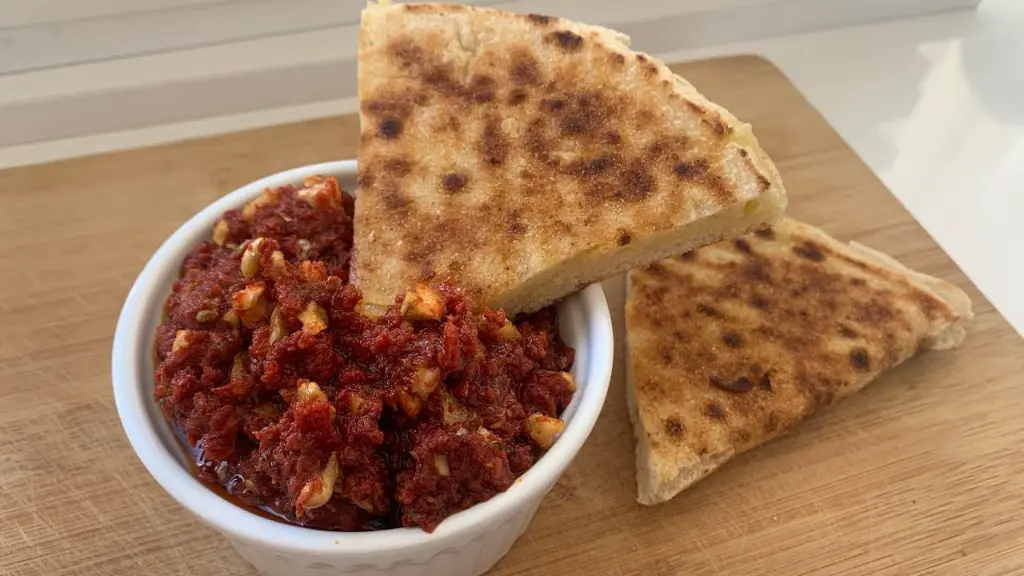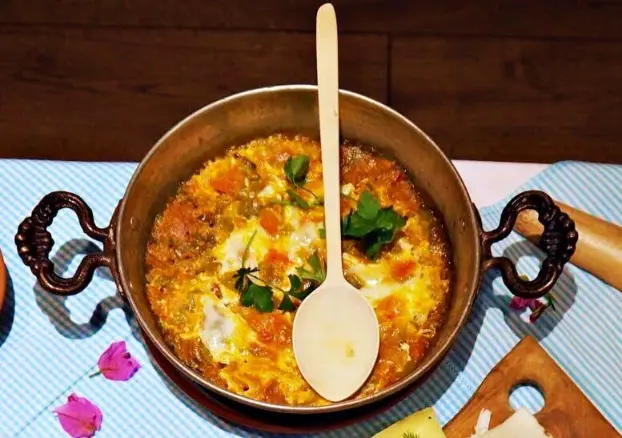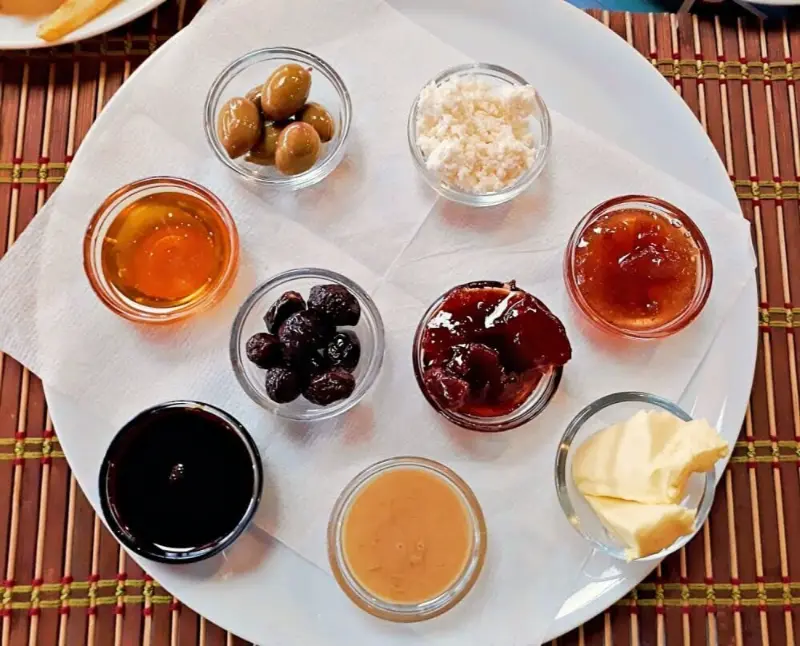A Turkish breakfast reflects the core of Turkish culture and hospitality, not only a meal. This feast is meant to wow all your senses with its variety of flavors, textures, and colors. This article will look at what makes a traditional Turkish breakfast so unique and how you can enjoy this regal feast right at home.
What makes a traditional Turkish breakfast so great?
First of all lets get to know why Turkish Breakfast is so great, Known as “kahvaltı,” a typical Turkish breakfast is a singular gastronomic adventure beyond mere hunger. It’s about community, connection, and beginning the day with a substantial meal that nourishes the spirit as much as the body. Usually loaded with a range of modest items, the Turkish breakfast table lets everyone savor a bit of everything. Turkish breakfast is so much a cherished custom because of its variety and quantity.
The focus on fresh, premium ingredients of a breakfast adds to its delight. Every component of the dish, from the crisp veggies to the creamy cheeses, is carefully cooked to guarantee the best flavor and satisfaction. This is also the ideal way to spend a morning with friends or family as its slow tempo promotes rest and discussion.
The Essential Components of a Turkish Breakfast Made Traditionally
A classic Turkish breakfast consists of a wonderful range of foods that together enhance the whole experience. Here are some of the main components you should find on a breakfast table:
Turkish Tea
Firstly, set in your mind that No breakfast seems complete without Turkish tea, or “çay.” Present in little, tulip-shaped glasses, this robust, fragrant tea complements the several items on the morning table. Since tea is customary to consume all through breakfast, the Turkish experience centers on it.
- Ingredients for Making Turkish Tea
Two pots a smaller one for making strong tea and a larger one for boiling extra water are needed to prepare Turkish tea. To each glass you intend to serve, first boil water in the small saucepan and add one teaspoon of tea. Allow it ten minutes to brew. In the bigger pot, boil more water in meantime. Pour one-third of the brewed tea into each glass then cover with boiling water. Change the strength to suit you; if you want sugar, add it now.
- Loose leaf black tea
- Water
- Sugar (optional)
Fresh Bread
Secondly, bread is a mainstay of Turkish cuisine; without it, no Turkish breakfast would be complete. Fresh bread is crucial for scooping up dips and spreads, whether it’s soft white bread, crusty whole wheat, or the popular “simit,” a sesame-covered ring bread.
- Ingredients for Making Simit
Date, fig, or carob molasses from Turkish, Greek, Middle Eastern, or Mediterranean stores might be used in place of grape molasses should you run across none. A final resort, regular molasses will alter the taste. The yeast is awakened with sugar; it should froth five minutes. This recipe calls for all-purpose flour, which performs nicely; Kosher or sea salt can be used. The dough gains some sweetness from grape molasses, which also aids sesame seeds adhere to the simit. The golden sesame seeds impart a crisp texture and nutty taste.
- Grape molasses (or date, fig, carob molasses)
- Sugar
- Active dry yeast
- All-purpose flour
- Sea salt (or Kosher salt)
- Golden sesame seeds
Cheeses
Then comes, Turkish breakfasts call for a range of cheeses, including “kaşar” (a semi-hard cheese), “Tulum” (a strong, crumbly cheese), and “beyaz peynir,” (white cheese akin to feta). Usually mild but tasty, these cheeses go great with fresh bread or eaten alone.
- Ingredients for Tulum Cheese
Made from goat’s milk, Tulum is a traditional Turkish white cheese with numerous regional variants including Izmir Tulum Cheese, one of the most widely consumed forms in Turkey. Usually found at restaurants with bread and butter, Izmir Tulum is well-known for its peculiar taste and texture. Popular brand Sütaş Izmir Tulum Cheese comes from pasteurized cow’s milk, matured for minimum six months, and has a semi-hard, porous structure. Breakfast calls for it as well as salads, sandwiches, and cheese platters.
- Pasteurized cow’s milk
- Table salt
- Rennet
- Preservative (potassium sorbate)
Olives
After that, any Turkish breakfast must have black and green olives as the main ingredients. Their salted, briny contrast with the other table items enhances the meal’s overall taste sensation.
- Ingredients for Olives in Turkish Breakfast
An integral and festive meal in Turkish culture is Turkish breakfast, sometimes known as kahvaltı—that is, “the food you eat before coffee”. Usually it consists of a range of fresh, savory foods including cheese, olives, eggs, tomatoes, cucumbers, jam, honey, fruit, sausage, and Turkish tea. Every Turkish breakfast offers variation in what you present, hence allowing freedom. The dinner honors the individuals seated around the table as much as the cuisine. It’s quick to prepare and a terrific way to start the day—nutritional as well.
- Black or green olives
- Olive oil (optional)
- Lemon slices (optional for garnish)
- Herbs and spices (optional, such as thyme or chili)
Fresh Vegetables
Then, at a Turkish breakfast, one often finds a dish of fresh, crisp vegetables like cucumbers, tomatoes, and peppers. These veggies provide a cool crispness and contrast to the cheeses’ and bread’ richness.
- Ingredients for Fresh Vegetables in Turkish Breakfast
- Cucumbers
- Tomatoes
- Green peppers (or bell peppers)
- Olive oil (optional drizzle)
- Fresh herbs (optional, like parsley or mint)
- Lemon slices (optional for garnish)
Spreads and Dips
Next, the dish gains complexity from various spreads and dips, including tahini, “acuka,” a spicy walnut and pepper paste, and “labneh,” a creamy strained yogurt.
- Ingredients for Making Acuka
Often shared among close friends and relatives, acuka is a renowned Turkish breakfast meal that brings cohesiveness to the cuisine. Made from tomato paste, pepper paste, and a concoction of spices, this is a savory spread with a little walnut and bread crumb texture. Often a unique recipe handed down or closely connected with family memories, acuka is prized for its rich, fiery taste.
- Five tablespoons sweet pepper pasting
- Two teaspoons tomato paste
- Ground walnuts one cup; olive oil one half cup.
- Three tablespoons breadcrumbs.
- Five cloves of garlic
- Three tablespoons red pepper flakes.
- One teaspoon thyme.
- One teaspoon of dried mint.
- Taste of salt; more spices as asked
Conceptual Eggs
Moreover, Turkish breakfasts revolve around eggs, prepared using various delectable techniques. One of the most often-used dishes is “menemen,” a well-cooked pan scramble of eggs with tomatoes, peppers, and seasonings. Another classic, “Sucuklu yumurta,” has eggs cooked with spicy Turkish sausage, sometimes referred to as “sucuk.” These dishes stand out among others in any breakfast because of their rich, delicious taste.
- Ingredients for Making Conceptual Eggs (Menemen)
Made around a spread of varied fresh and delicious foods including eggs, olives, cucumbers, bread, cheese, and tea, Turkish breakfast—also known as kahvaltı—is a favorite meal. Popular Turkish breakfast cuisine Menemen is created with scrambled or poached eggs cooked in tomato and onion sauce. It’s like Middle Eastern shakshuka and usually presented in the skillet used for cooking. Not only breakfast, but any meal would benefit from the dish as it goes nicely with bread, olives, and veggies.
- Eggs
- Onions
- Peppers
- Tomatoes
- Olive oil
- Salt and pepper (to taste)
- Bread (for serving)
- Optional: garlic-yogurt sauce, cucumbers, olives
Butter, jams, and other spreadable pleasures
Last but not least, without butter and a range of sweet spreads, no breakfast is whole in Turkey. On warm bread, fresh, creamy butter is ideal; a variety of handmade jams and honey gives the meal some sweetener. Apricot, strawberry, and fig jams are popular choices; “kaymak,” a thick clotted cream, sometimes complements rich, golden honey for a decadent delicacy.
- Ingredients for Making Kaymak
Made from water buffalo milk, the thick, creamy Turkish delicacy known as kaymak is akin to clotted cream. A staple of Turkish breakfasts, it is sometimes presented with honey. Various Turkish desserts, including katmer, baklava, lokum, künefe, and ayva tatlısı, also call for kaymak. It’s a breakfast favorite because of its creamy consistency and sweet complementing taste with honey. Many of the eateries in Istanbul include balkaymak, a mix of kaymak and honey, which is a must-try for tourists.
- Water buffalo milk (or cow’s milk if unavailable)
- Honey (for serving)
- Optional: sugar (if a sweeter flavor is desired)
The Art of Enjoying a Turkish Breakfast
Savoring a Turkish breakfast is as much about the experience as it is about the cuisine. Typically, a large communal table presents the meal, with everyone sharing the same dishes. This promotes a friendly, inviting environment and helps one to feel united. Breakfast in Turkey may linger hours as people sip tea, converse, and enjoy every mouthful.
How to Create Your Turkish Breakfast at Home
Making a Turkish breakfast at home is not as difficult as you would imagine. Start with fresh bread, then arrange cheeses and olives. Add a variety of vegetables, some eggs cooked to your preference, and a few sweet spreads like honey and jam. Don’t forget the tea! These ingredients will help you to savor the real taste of breakfast right in your own house.
Conclusion
A Turkish breakfast celebrates tastes and customs that unite people rather than only food. Whether you’re having it in Turkey or cooking it at home, breakfast in Turkey provides a great and unforgettable beginning to any day. So why not get your friends together, arrange a spread of fresh bread, cheeses, and other treats, and have the best breakfast for yourself?

